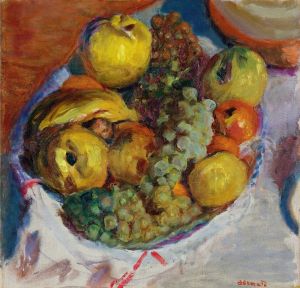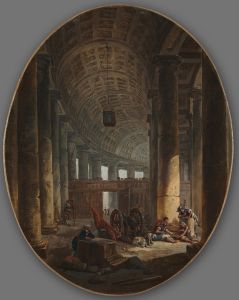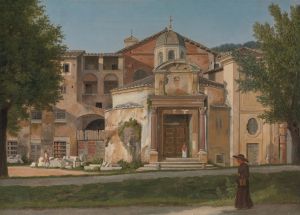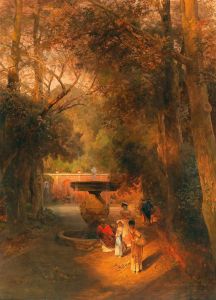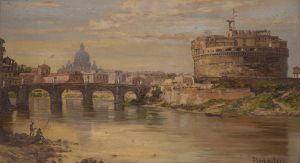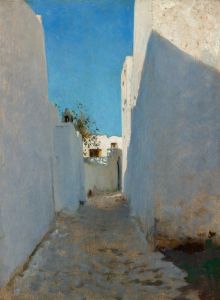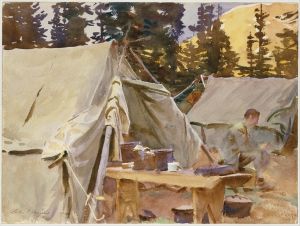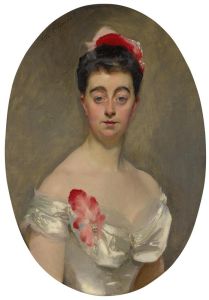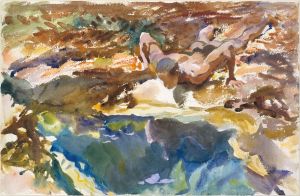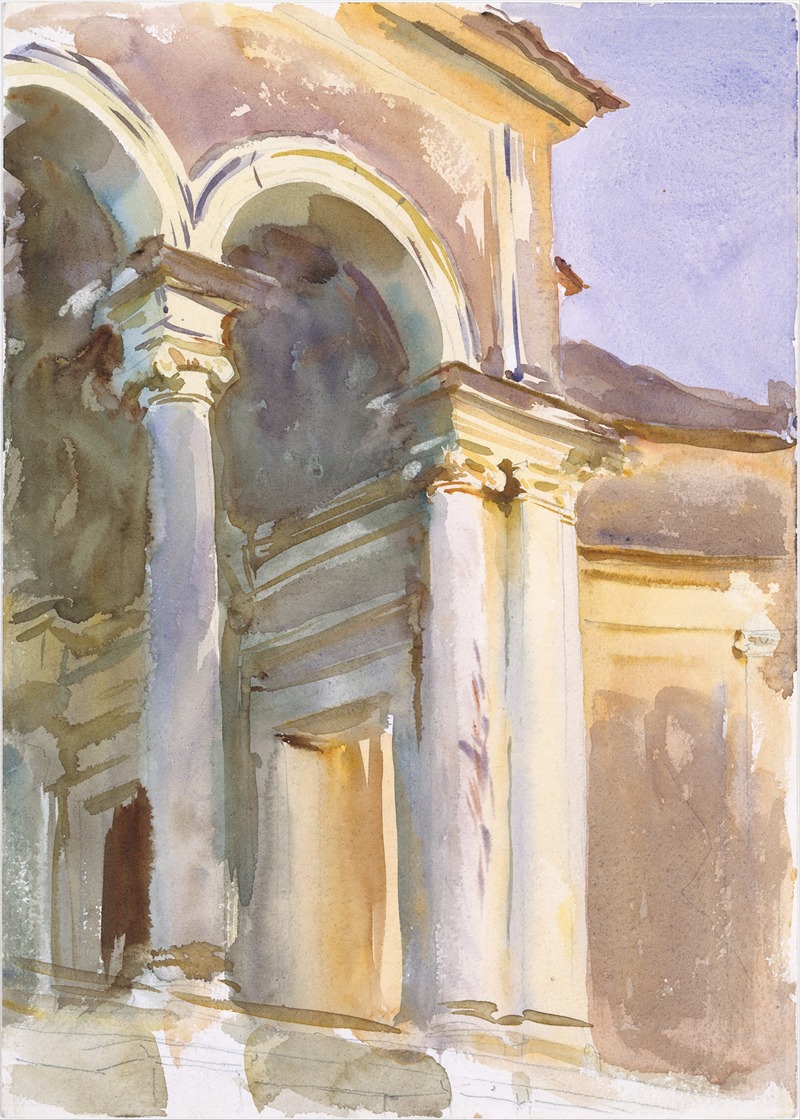
Loggia, Villa Giulia, Rome
A hand-painted replica of John Singer Sargent’s masterpiece Loggia, Villa Giulia, Rome, meticulously crafted by professional artists to capture the true essence of the original. Each piece is created with museum-quality canvas and rare mineral pigments, carefully painted by experienced artists with delicate brushstrokes and rich, layered colors to perfectly recreate the texture of the original artwork. Unlike machine-printed reproductions, this hand-painted version brings the painting to life, infused with the artist’s emotions and skill in every stroke. Whether for personal collection or home decoration, it instantly elevates the artistic atmosphere of any space.
John Singer Sargent, an American expatriate artist renowned for his portraits, landscapes, and watercolors, painted "Loggia, Villa Giulia, Rome" during his extensive travels across Europe. Sargent's work is celebrated for its technical precision, vibrant use of color, and ability to capture the essence of his subjects, whether they be people, places, or objects. This particular painting is a testament to his skill in depicting architectural spaces and the interplay of light and shadow.
"Loggia, Villa Giulia, Rome" is a watercolor painting that showcases Sargent's fascination with architecture and his adeptness in capturing the atmospheric qualities of a scene. The Villa Giulia, located in Rome, is a significant historical and architectural landmark. It was commissioned by Pope Julius III in the mid-16th century and designed by a team of architects including Giorgio Vasari, Jacopo Barozzi da Vignola, and Bartolomeo Ammanati. The villa is renowned for its elegant Renaissance architecture and its beautiful gardens, which reflect the opulence and artistic tastes of the period.
Sargent's painting focuses on the loggia, an open gallery or corridor, which is a prominent feature of the villa's design. The loggia in Villa Giulia is noted for its harmonious proportions and intricate decorations, which Sargent captures with meticulous attention to detail. His use of watercolor allows for a delicate rendering of the light filtering through the arches and the subtle play of shadows on the stone surfaces. The painting exemplifies Sargent's ability to convey the serene and timeless beauty of architectural forms.
In "Loggia, Villa Giulia, Rome," Sargent employs a palette that emphasizes the warm tones of the stone and the lush greenery surrounding the villa. The composition is carefully balanced, drawing the viewer's eye through the arches and into the depth of the space beyond. This work is a fine example of Sargent's skill in using watercolor to achieve both precision and a sense of spontaneity, capturing the fleeting effects of light and atmosphere with apparent ease.
Sargent's interest in architectural subjects was part of his broader artistic exploration during his travels. He often painted en plein air, directly observing and capturing the scenes before him. This approach allowed him to infuse his works with a sense of immediacy and authenticity. "Loggia, Villa Giulia, Rome" reflects Sargent's appreciation for the cultural and historical significance of the sites he visited, as well as his ability to translate that appreciation into compelling visual art.
The painting is part of Sargent's extensive body of work that includes numerous studies of European architecture and landscapes. His travels took him to various countries, where he painted a wide range of subjects, from the canals of Venice to the gardens of Spain. Each work offers insight into Sargent's artistic vision and his ability to capture the unique character of each location.
"Loggia, Villa Giulia, Rome" remains a testament to John Singer Sargent's mastery of watercolor and his enduring fascination with the beauty of architectural forms. Through this painting, viewers can appreciate not only the skill of the artist but also the timeless elegance of the Villa Giulia itself.





